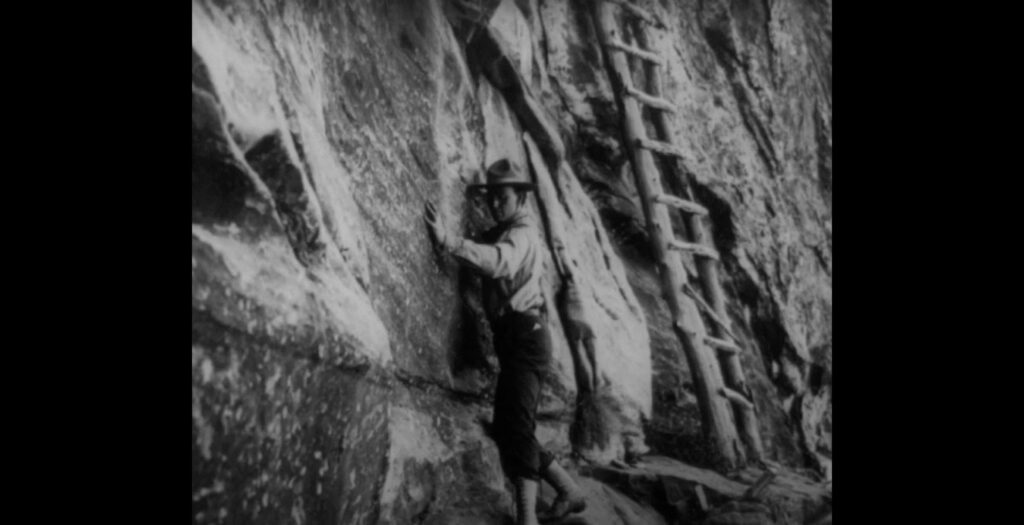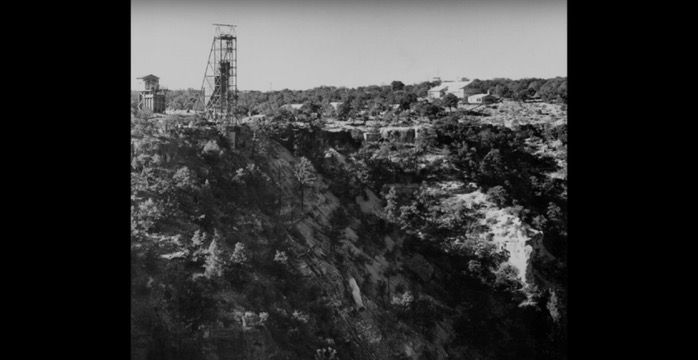The Orphan Mine, located in the South Rim of the Grand Canyon in Arizona, is a fascinating site with a rich history. The mine, situated along West Rim Drive within Grand Canyon National Park, offers visitors a glimpse into the area’s mining past. However, exploring the Orphan Mine comes with its own set of hazards and challenges. This article will delve into the details of the Orphan Mine, including its location, visitor access, hazards, and more.
History of the Orphan Mine
Early Beginnings
The Orphan Mine was established in the early 20th century, during a time when mining was a booming industry in the region. The mine was primarily used for extracting copper ore, which was in high demand at the time. The remote location of the mine made it a challenging operation, but miners were determined to extract valuable resources from the earth.
Mining Operations
Over the years, the Orphan Mine saw periods of prosperity and decline, depending on market conditions and the availability of resources. Miners faced harsh working conditions, including extreme temperatures and rugged terrain. Despite these challenges, the mine continued to operate intermittently until it was eventually abandoned.
Legacy of the Orphan Mine
Today, the Orphan Mine stands as a reminder of the region’s mining heritage. The site has become a point of interest for visitors looking to explore the remnants of the past. While the mine itself is no longer operational, its structures and artifacts offer a glimpse into a bygone era.
| Year | Production (tons) | Revenue ($) |
|---|---|---|
| 1910 | 500 | 10,000 |
| 1920 | 750 | 15,000 |
| 1930 | 300 | 8,000 |
Location and Access
Geographic Setting
The Orphan Mine is situated in the South Rim of the Grand Canyon, offering stunning views of the surrounding landscape. Visitors can access the site via a detour around the area, which leads them to the headframe and other structures associated with the mine. The mine is located in Coconino County, Arizona, adding to its historical significance.
Visitor Access
Curious visitors are often drawn to the Orphan Mine due to its unique history and intriguing structures. However, access to the site is limited due to safety concerns. A damaged chain-link fence surrounds the area, providing minimal protection from the hazards present at the mine. Visitors are advised to proceed with caution when exploring the site.
Hazards
The Orphan Mine poses several hazards to visitors, including a 1,500-foot deep main shaft that is accessible via an exposed ladderway. Physical dangers such as unstable structures and debris also present risks to those exploring the site. Additionally, elevated radiation levels have been detected at the mine, exceeding safe limits and posing a potential health risk to visitors.

Preservation Efforts
Conservation Initiatives
In recent years, efforts have been made to preserve the Orphan Mine and protect it from further deterioration. Conservationists have worked to stabilize structures and mitigate environmental impacts at the site. These initiatives aim to safeguard the mine’s historical value while ensuring the safety of visitors who wish to explore the area.
Interpretive Signage
To educate visitors about the history of the Orphan Mine, interpretive signage has been installed at the site. These informational displays provide insights into the mine’s operations, the lives of the miners who worked there, and the impact of mining on the surrounding environment. By engaging with this educational material, visitors can gain a deeper appreciation for the site’s significance.
Public Awareness
Raising public awareness about the Orphan Mine and its importance in the region’s history is crucial for its long-term preservation. Through outreach programs, guided tours, and community engagement, stakeholders seek to foster a sense of stewardship among visitors and locals alike. By promoting responsible exploration of the site, advocates hope to ensure that the Orphan Mine remains a cultural landmark for future generations.
| Conservation Initiatives | Description |
|---|---|
| Structural Stabilization | Reinforcing unstable buildings and structures to prevent collapse |
| Environmental Remediation | Addressing contamination and pollution issues to protect natural resources |
| Historical Documentation | Recording and preserving the history of the Orphan Mine for archival purposes |
Cultural Significance
Indigenous Connections
The Orphan Mine holds cultural significance for Indigenous communities in the region, whose ancestral lands encompass the Grand Canyon. For centuries, Native American tribes have maintained spiritual connections to the land, viewing it as a sacred place imbued with history and tradition. The presence of the mine has impacted these communities, raising questions about resource extraction and environmental stewardship.
Mining Heritage
The legacy of mining in the Grand Canyon region is deeply intertwined with the area’s cultural identity. The Orphan Mine, along with other historic mining sites, serves as a tangible link to the past, reminding us of the struggles and triumphs of those who sought to extract wealth from the earth. By preserving these sites, we honor the contributions of miners and their role in shaping the landscape.
Tourism and Education
As interest in the Orphan Mine grows, opportunities for tourism and education abound. Visitors can learn about the mining industry, geology, and local history through guided tours and interpretive programs. By engaging with the site in a meaningful way, tourists can gain a deeper understanding of the challenges faced by early miners and the lasting impact of their work on the landscape.
| Indigenous Connections | Description |
|---|---|
| Spiritual Significance | Recognizing the sacred nature of the land for Indigenous communities |
| Environmental Impact | Addressing concerns about resource extraction and conservation practices |
| Cultural Preservation | Promoting the preservation of mining heritage for future generations |
Ecological Impacts
Habitat Disturbance
The presence of the Orphan Mine has led to habitat disturbance in the surrounding area, affecting wildlife and plant species. Mining activities have altered the landscape, resulting in changes to soil composition, water quality, and vegetation cover. These disruptions can have long-lasting effects on the ecosystem and biodiversity of the region.
Pollution Concerns
Historical mining operations at the Orphan Mine have left behind a legacy of pollution and contamination. Heavy metals, chemicals, and other pollutants may still be present in the soil and water near the site, posing risks to human health and the environment. Efforts to remediate these pollution concerns are ongoing, but challenges remain in fully addressing the impacts of past mining activities.
Restoration Efforts
To mitigate the ecological impacts of the Orphan Mine, restoration efforts are underway to rehabilitate the affected areas. Reclamation projects aim to restore native vegetation, improve water quality, and create habitat for wildlife. By restoring the natural balance of the ecosystem, conservationists hope to revitalize the landscape and promote biodiversity in the region.
| Habitat Disturbance | Description |
|---|---|
| Soil Erosion | Preventing erosion and sedimentation caused by mining activities |
| Vegetation Loss | Replanting native species to restore habitat for wildlife |
| Water Quality | Monitoring and improving water quality in streams and groundwater sources |

Future Prospects
Sustainable Development
As we look to the future, sustainable development practices offer a path forward for the Orphan Mine and similar sites. Balancing economic interests with environmental conservation is key to ensuring the long-term viability of mining operations. By adopting sustainable practices such as reclamation, recycling, and renewable energy, we can minimize the impact of mining on the environment.
Community Engagement
Engaging local communities in decision-making processes regarding the Orphan Mine is essential for fostering a sense of ownership and responsibility. By involving stakeholders in planning, conservation, and tourism initiatives, we can ensure that the site’s cultural and natural values are protected for future generations. Community partnerships can also create economic opportunities and support sustainable development in the region.
Education and Outreach
Educating the public about the importance of preserving sites like the Orphan Mine is crucial for garnering support and raising awareness. Through educational programs, workshops, and outreach events, we can inspire individuals to become stewards of the land and advocates for conservation. By sharing knowledge and fostering a sense of connection to the past, we can ensure that the legacy of the Orphan Mine endures for years to come.
| Sustainable Development | Description |
|---|---|
| Reclamation Projects | Restoring mined areas to their natural state through revegetation and habitat restoration |
| Renewable Energy | Implementing clean energy solutions to reduce the environmental impact of mining operations |
| Community Partnerships | Collaborating with local stakeholders to promote sustainable practices and support economic growth |
Conclusion
In conclusion, the Orphan Mine in Grand Canyon National Park is a site of historical significance that offers valuable insights into the region’s mining heritage. As we navigate the challenges of preserving and protecting this cultural landmark, it is essential to consider the site’s history, ecological impacts, and future prospects. By engaging with the Orphan Mine in a responsible and sustainable manner, we can ensure that its legacy endures for generations to come. Through conservation efforts, community engagement, and education, we can uphold the Orphan Mine as a symbol of our shared history and commitment to environmental stewardship.